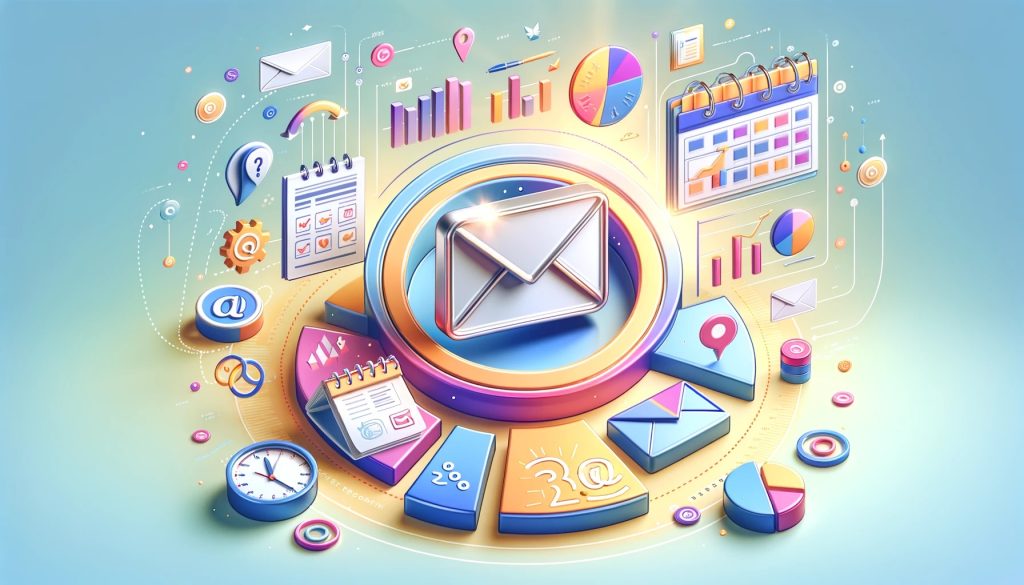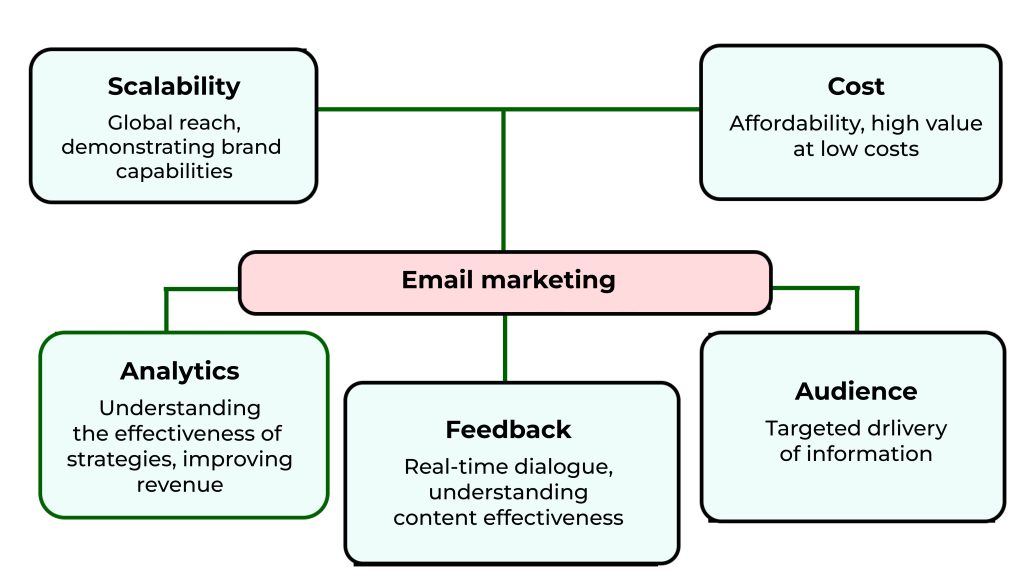In a crowded Internet environment, with every corner of the web vying for attention, how can you attract customers to you? This is where email marketing comes to the rescue – a tool that subtly captures attention and directs it directly to your business. Let’s dive into the world of email marketing and find out how it can significantly boost your sales.
Email marketing is not just a buzzword; it opens up a wide range of opportunities for your business. It allows you to present your product or service in a way that customers can’t resist. Think of it as a bridge that connects your brand to the people who need what you offer.

Now let’s understand what email marketing is and why it makes a huge difference:
- Feedback
Email marketing allows for a real-time dialogue between you and your customers. Their responses provide insight into how effective your content is.
- Audience
It’s akin to shooting accurately with a sniper rifle rather than haphazardly firing a scattergun. With email marketing, you can control who gets to hear about your product or service, ensuring your message reaches people.
- Cost
Unlike marketing methods, email marketing tools are relatively affordable. It’s like getting the benefits of business class for the price of an economy class ticket.
- Scalability
Email marketing provides market access, allowing your brand to reach millions of people around the world. It is an opportunity to showcase your brand’s capabilities on a large scale.
- Analytics
With email marketing, you get information that acts like a crystal ball, helping you understand what strategies are effective, what needs improvement and how to refine your approach.

Basic steps in creating a better email
Every word, image and link carries weight in building a customer journey towards your brand. How do you create writing that will not only grab attention but turn readers into buyers? Here are some basic steps to help you do just that:
Step 1: Clearly understand your goal
Before taking any action, clearly define the goal you want to achieve with this letter. Whether it’s to increase sales, increase website traffic or increase subscribers, each goal requires a specific approach.
Step 2: Know your audience
Remember that your recipients are not just email addresses. They are individuals with their own needs and interests. Please do your research to understand what they are interested in and how your product or service can fulfil their needs.
Step 3: Attractive email subject line
Creating an attention-grabbing headline is essential as it is your first and possibly only opportunity to pique the reader’s interest. Aim for intrigue and promise in your headline.
Step 4: Personalisation
Adding a touch is always welcome. Use customer information to make the letter more personalised by addressing them by name or offering recommendations based on their purchases.
Step 5: Keep it short and to the point.
Keep your message concise and clear. The simpler and more precise your message is, the more likely it is to be read and resonate with your reader. What do you want your reader to do next? Make this step evident and easy to follow.
Step 6: Optimisation
Experimentation and optimisation are essential. Test variations of your texts to determine what works best for your audience. Don’t hesitate to try different approaches to improve your results.

Measuring effectiveness with engagement metrics
Engagement metrics play an important role in capturing the emotions, interests and actions of your customers. However, it can be tricky to determine which metrics are the most meaningful and how to use them to improve the effectiveness of your campaigns. Let’s break it down.

- Email open rate
The open rate indicates how engaging and relevant your emails are to your audience. It serves as a step towards engagement and reflects the effectiveness of your headline.
- Clickability
Click-through rate (CTR) reflects the number of recipients who clicked on the links in your email. It reflects how interested and engaged your audience is with your content.
- Link clicks
Analysing which links received the most clicks will help you understand which topics or offers resonate most with your audience.
- Bounce rates and spam complaints
Bounce and spam complaint rates provide insight into how well your posts meet your audience’s expectations. They also help you identify problems in your content.
- Conversion
Conversion is undoubtedly one of the most critical metrics. It measures how many clicks turn into desired actions such as purchase, subscription or other conversion actions.
- Reading Time
This metric shows how much time users spend reading your email. It can serve as an indicator of the quality and relevance of your content.
Proper use of technology
In email marketing, technological advancements are constantly changing the landscape, providing marketers with tools and opportunities. Automation and analytics are essential in making your email campaigns more efficient and effective. Let’s look at the opportunities that today’s technology presents to you.
Automation
Trigger emails: Automatically send personalised emails based on actions or events, such as registering on a website or adding products to a cart.
Segmentation and personalisation: Use automation to segment your database and deliver personalised messages to segments of your audience.
Mailing plan: Schedule your mailings to reach your audience at times convenient for you and your customers.
Analytics
By analysing how your audience interacts with your emails, you gain insight into their interests and preferences. To make decisions rather than relying on assumptions, you must conduct A/B tests to determine best practices and optimise your mailings based on the data. In addition, using data visualisation techniques allows you to create reports and dashboards to help you and your team quickly assess campaign performance.
Integrating your email platform with customer relationship management (CRM) and content management systems (CMS) allows you to optimise and automate your marketing efforts, ensuring better coordination. Synchronising email campaigns with social media activity and online advertising across all channels will enable you to create messages that resonate with your audience.

Understanding and utilising these techniques can significantly enhance your ability to connect with your audience and create campaigns that drive action.
Now that you know, it’s time to put it into practice. Try out strategies, analyse the results and constantly work on improving your email campaigns. Feel free to reflect and adopt a learning mentality to utilise the potential of email marketing for your business entirely. Success starts with that one click.
